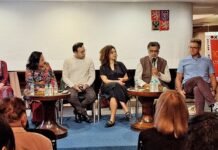The Indian print industry is now large and mature enough to evaluate the major sheetfed press manufacturers. And since it seems to be a country where print processes on various substrates or surfaces are still growing, offset sheetfed is also likely to be around for at least another 25 years. For printers who are growing and investing, it is important to not only be aware of the latest technologies and value-add techniques but also about the major manufacturers’ own financial viability and their commitment to our market.
A major consideration for investing in a new press that costs anywhere from Rs. 2.5 crore to Rs. 15 crore (US$ 300,000 to US$ 2,000,000) should be whether the manufacturer will still be around in 10 or 15 years! Where will the spare parts and service come from as well as the ever more important value additions. The considerations should apply to the purchase of used presses as well.
We have tried to present the financial data of five major sheetfed press manufacturers in one issue although their financial years and results are not totally synchronized. Although not every manufacturer’s financial data is equally transparent, numerate readers are encouraged to try and go deeper, and we welcome their inputs and comments.
On the whole, the five major manufacturers—Heidelberg, KBA, Komori, manroland sheetfed and RMGT—seem to have survived the past decade’s shakeout with a series of restructuring, realignment, refinancing and downsizing moves. Of the five, KBA and manroland sheetfed have shown some real profitability while Heidelberg, KBA and Komori have brought their digital presses to market. In the case of Ryobi and Mitsubishi, the consolidation into RMGT seems successful. In the main all five are optimistic about the current year. The industry seems viable for the moment although there is room for improvement on the overall employment-to-turnover ratio amongst some and for further consolidation in the coming decade.


















